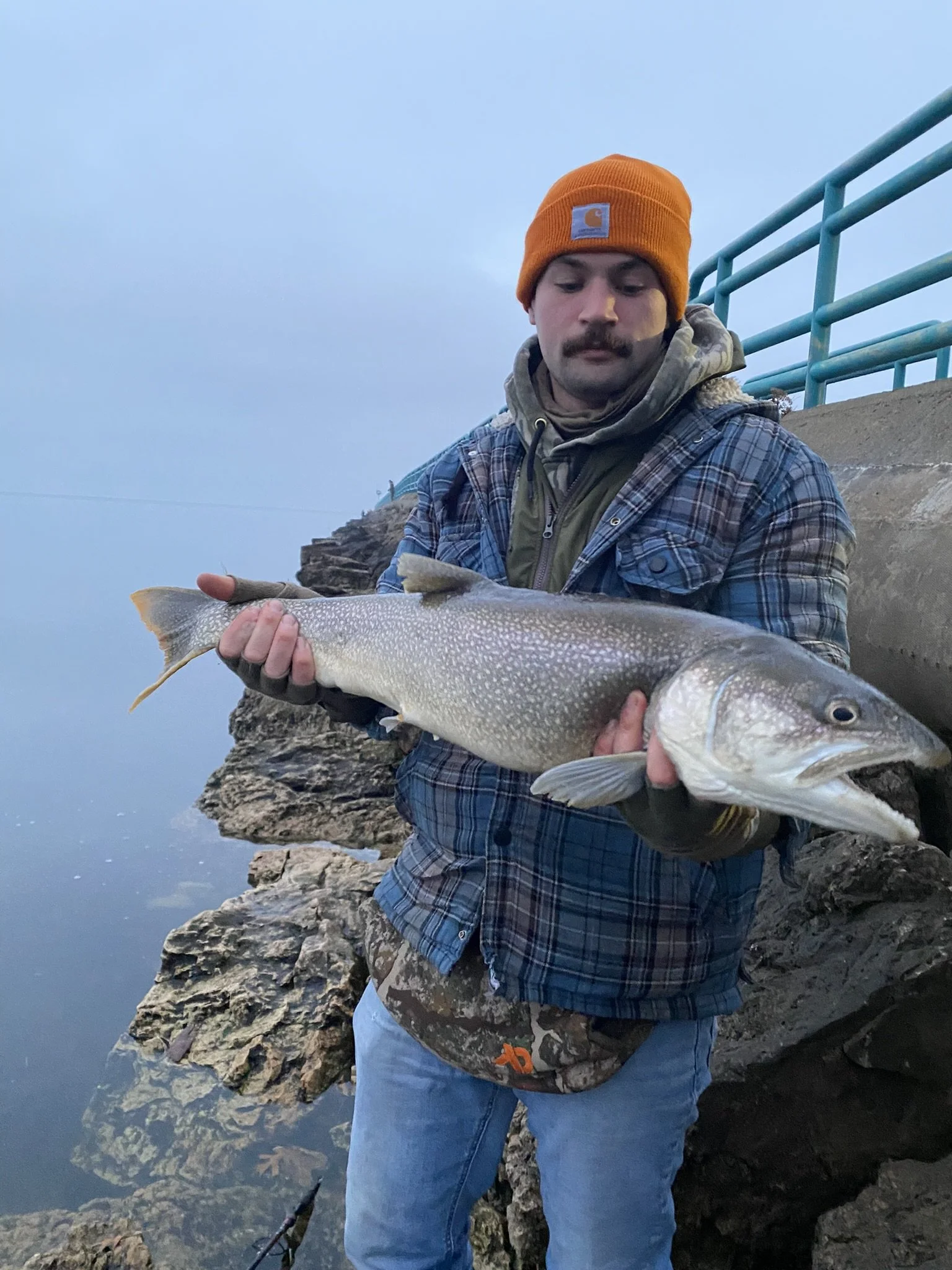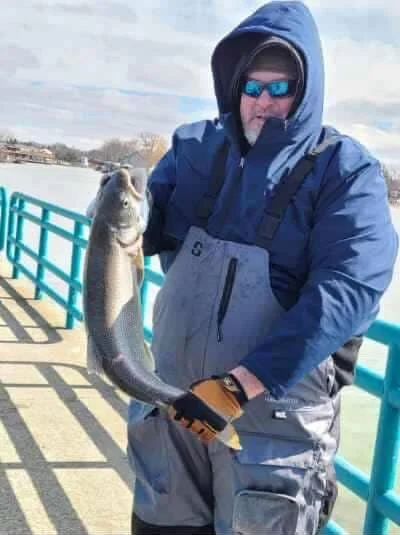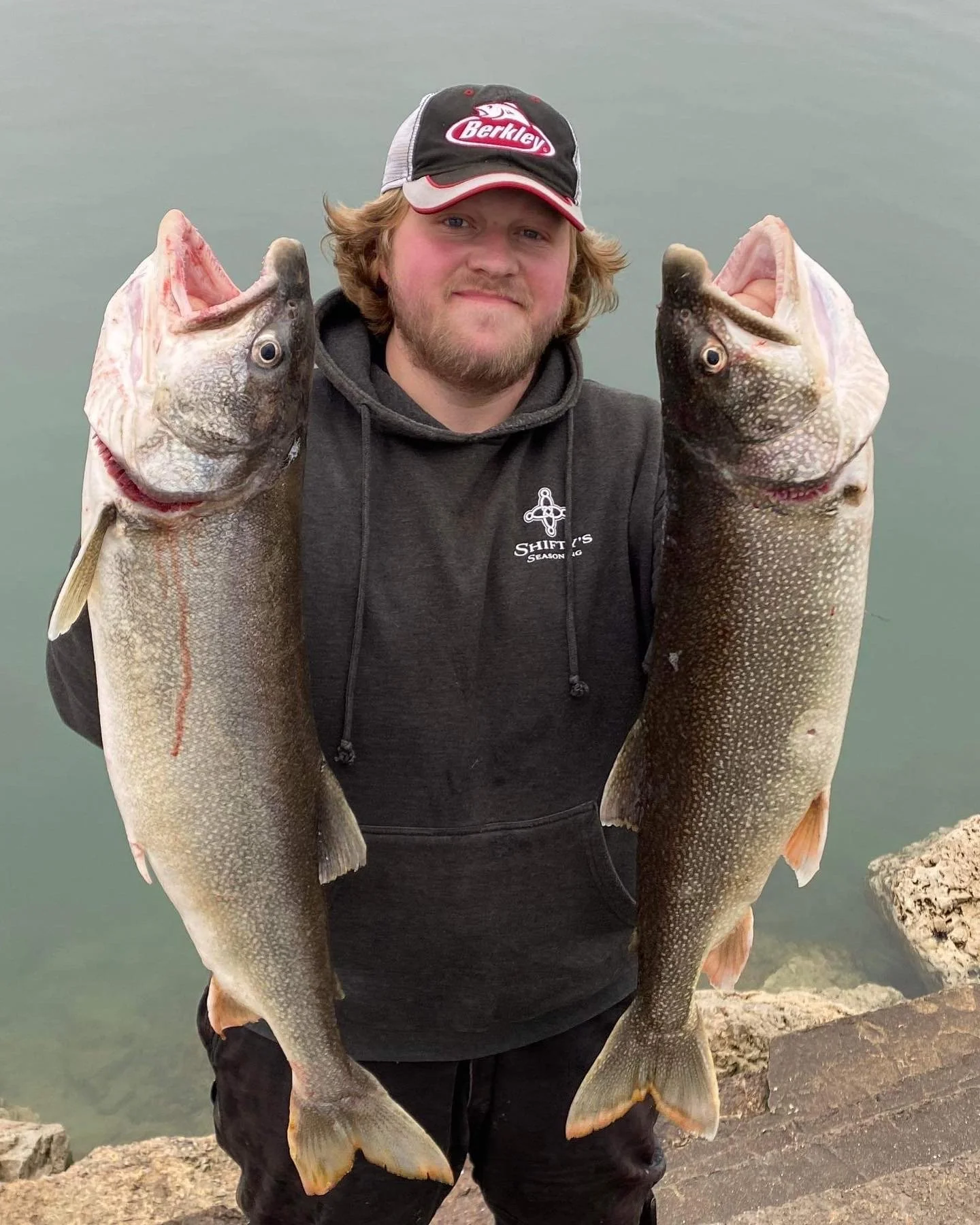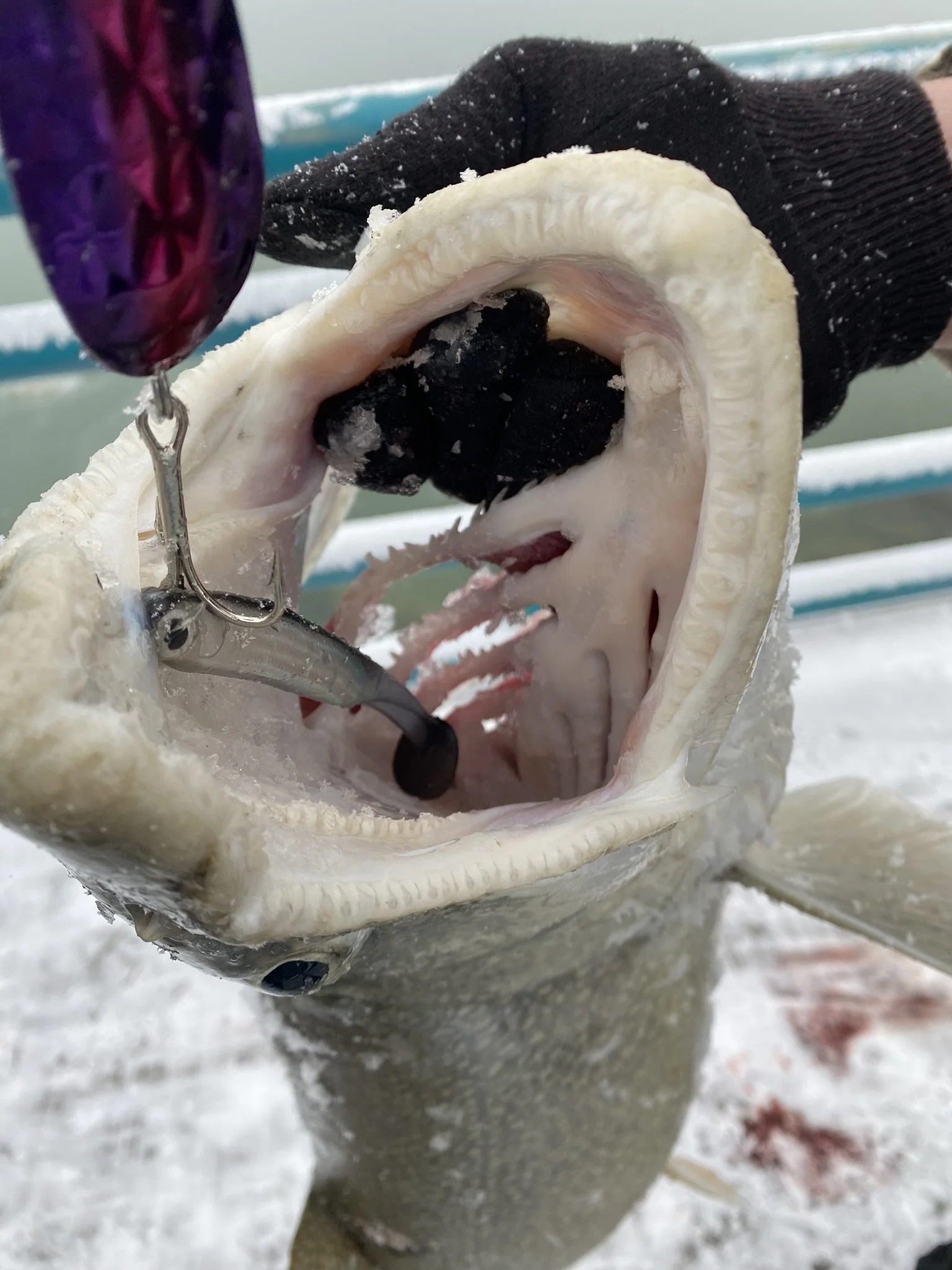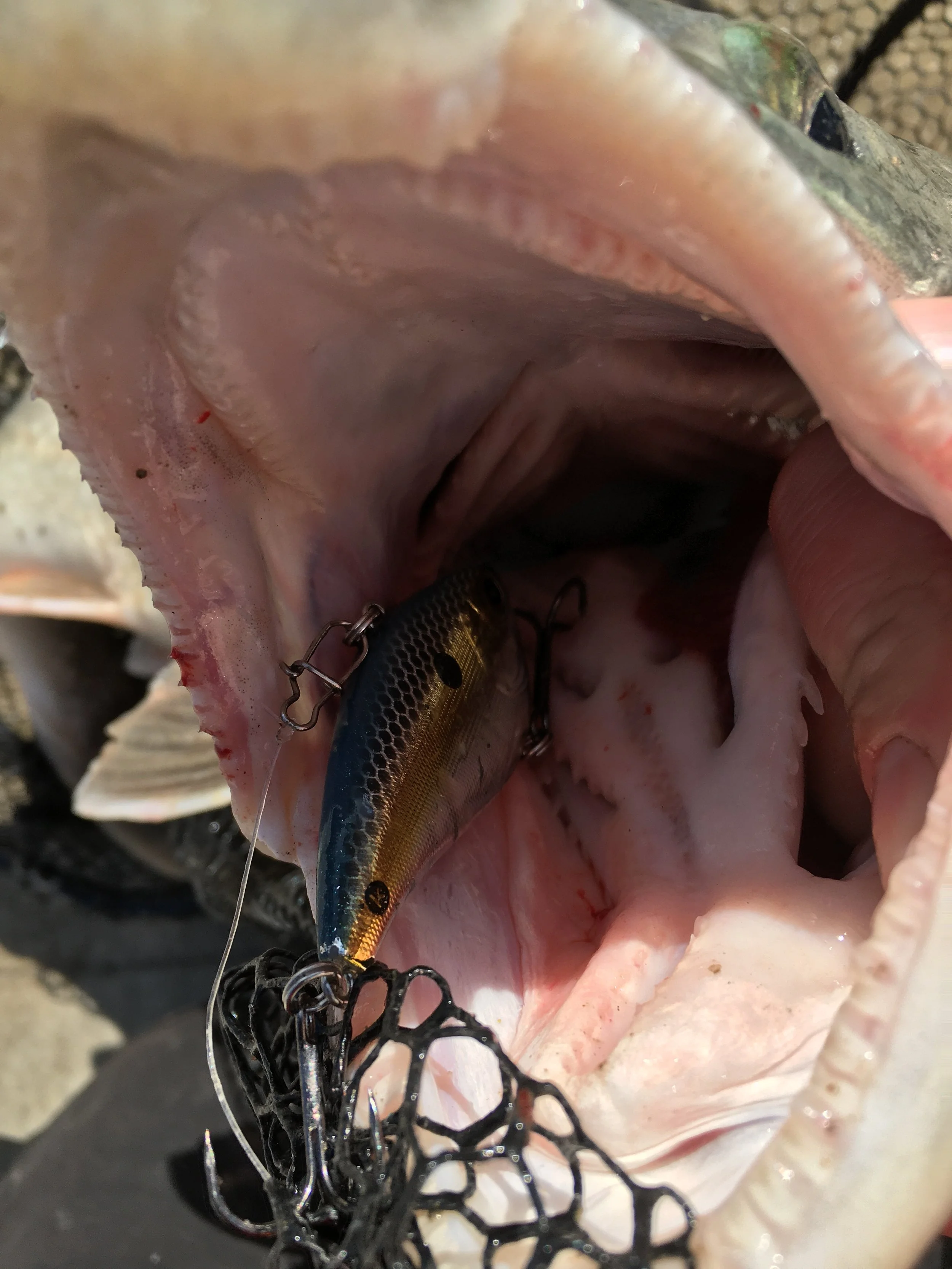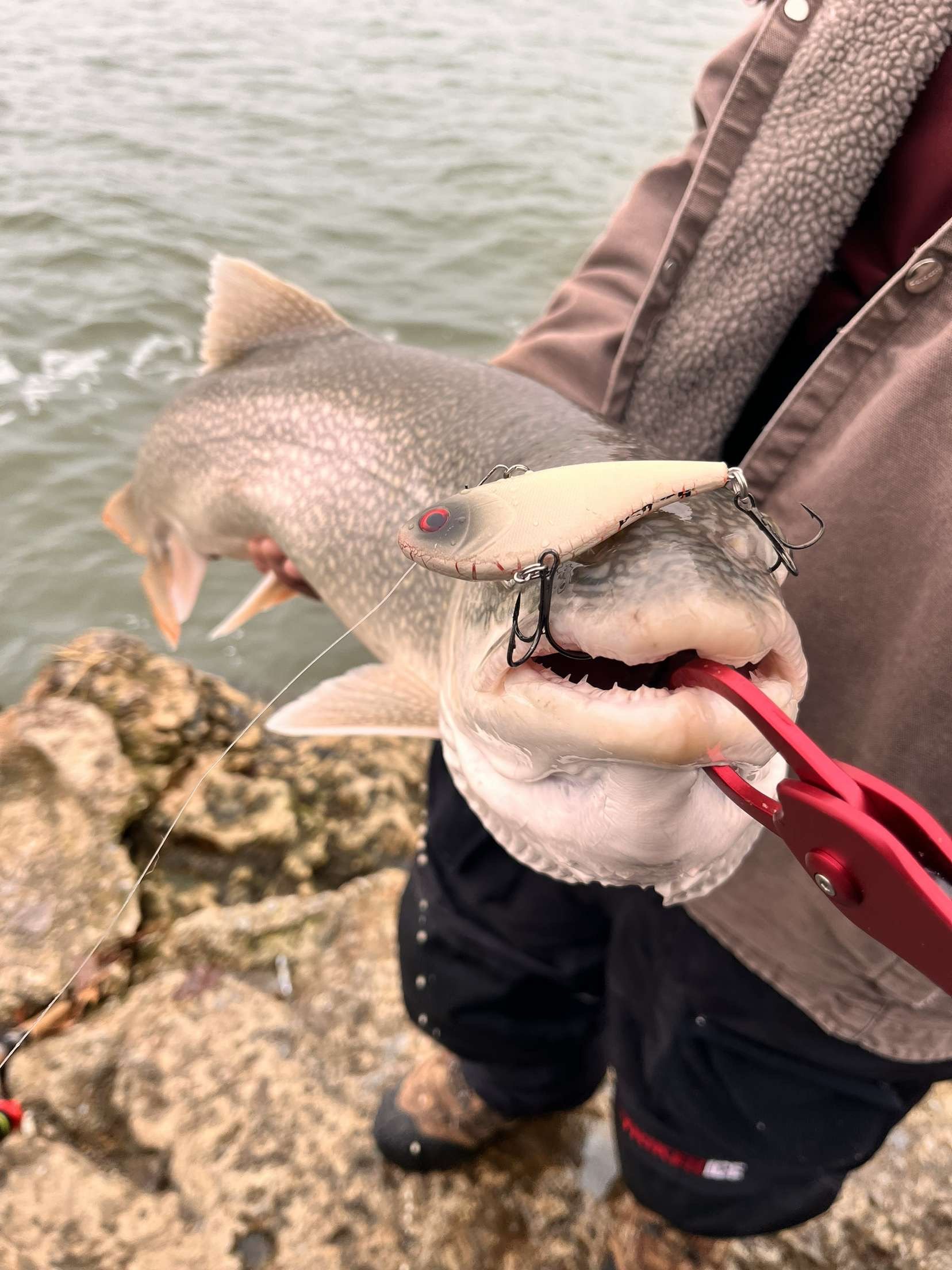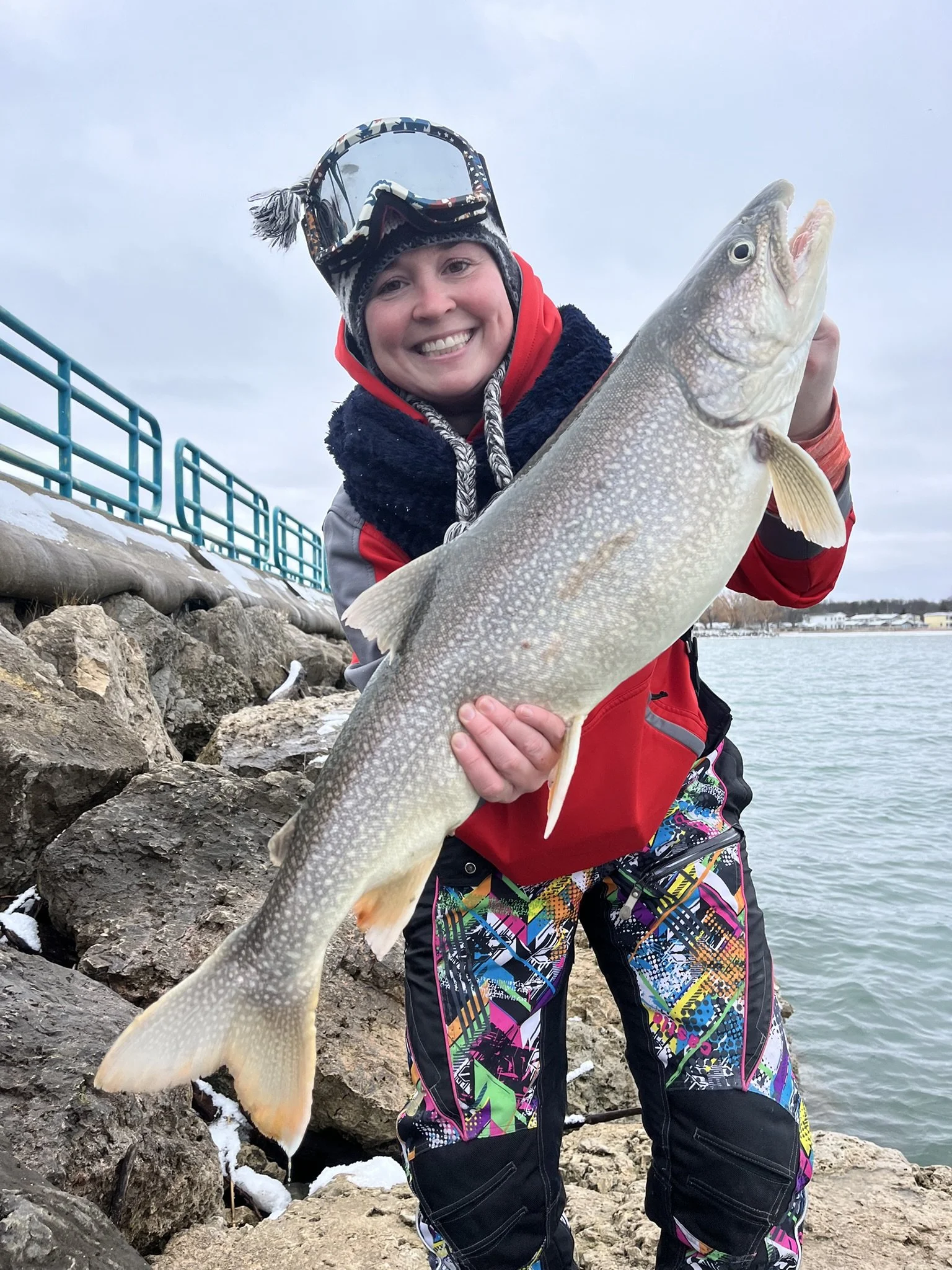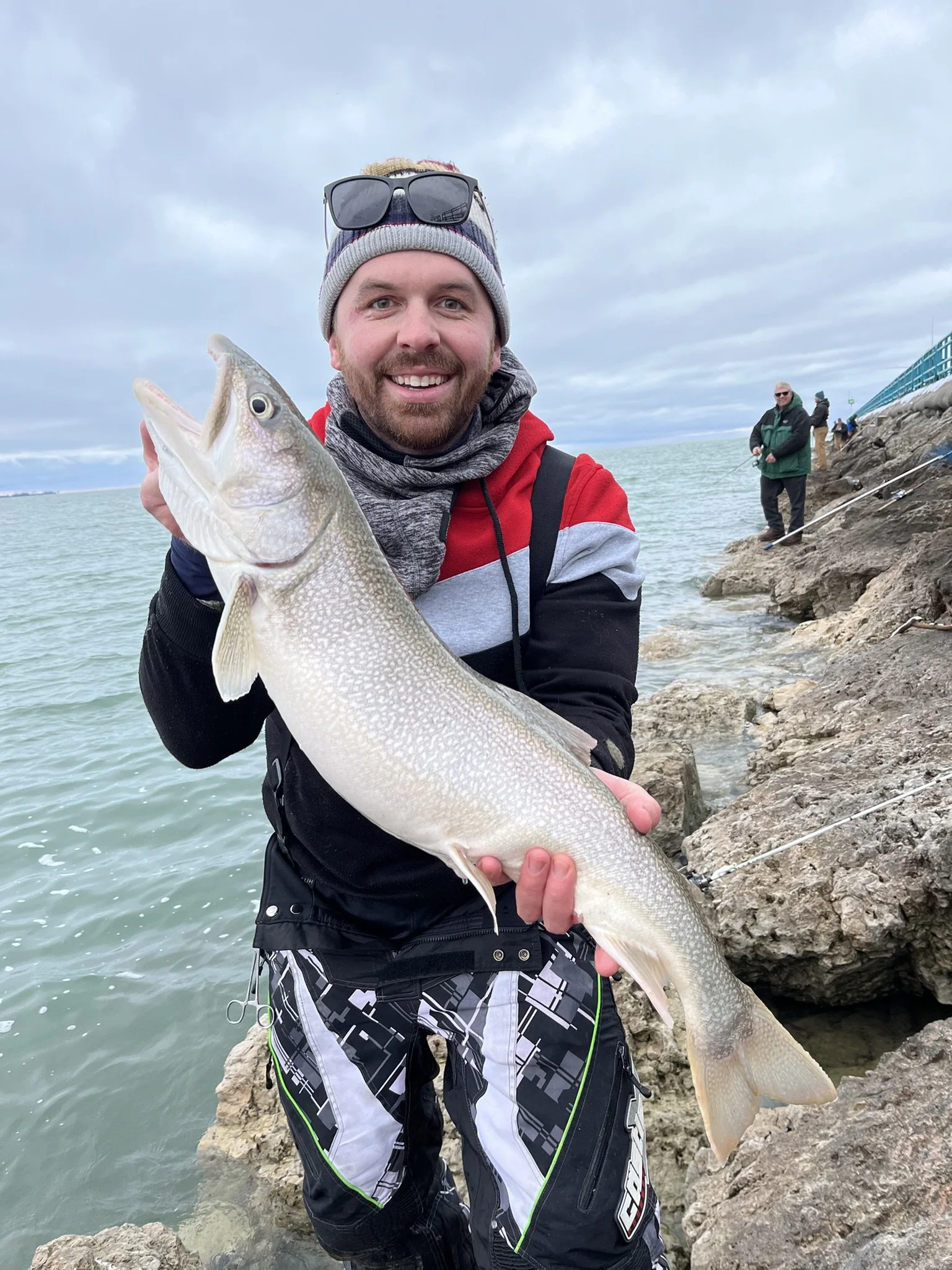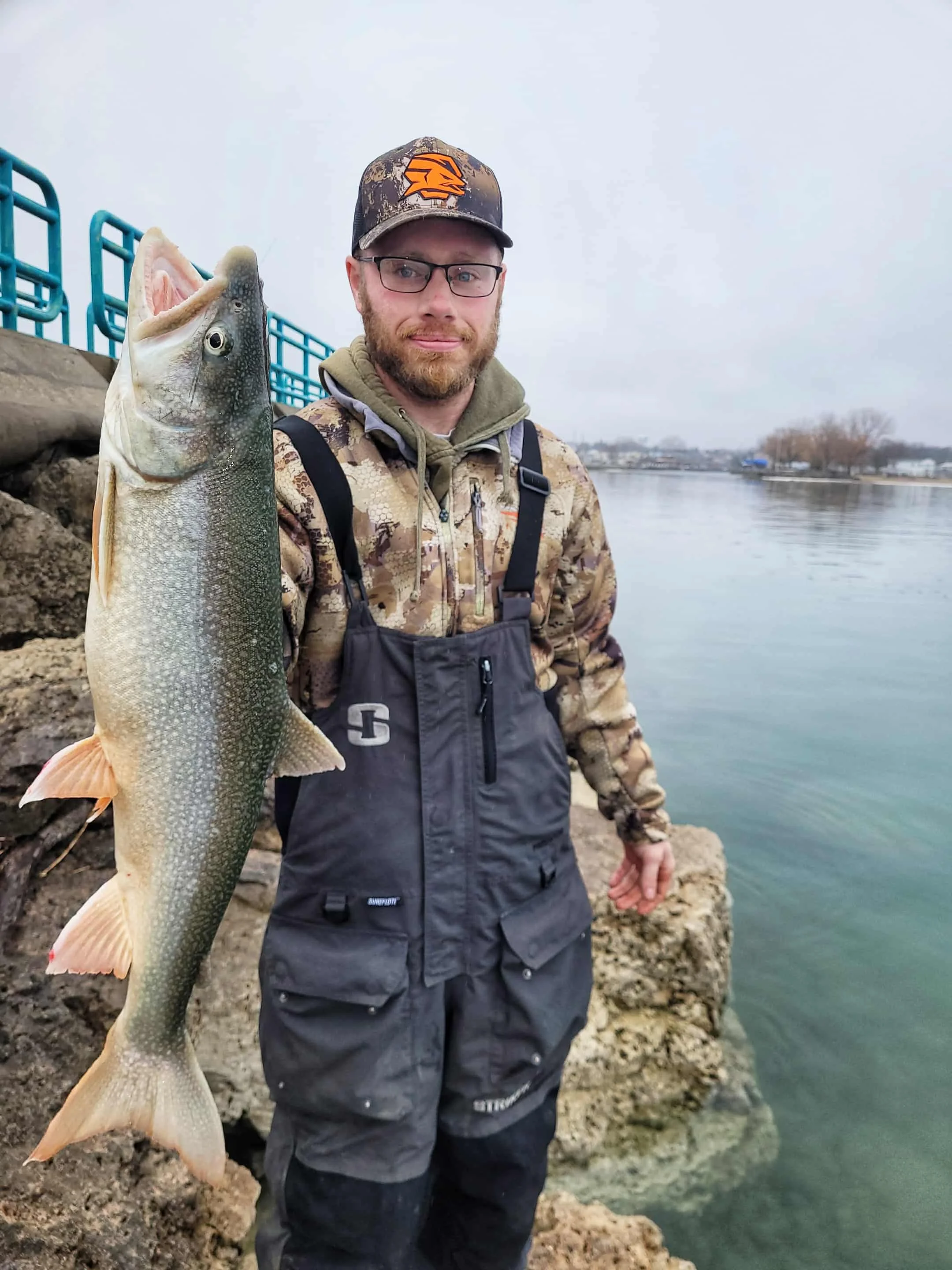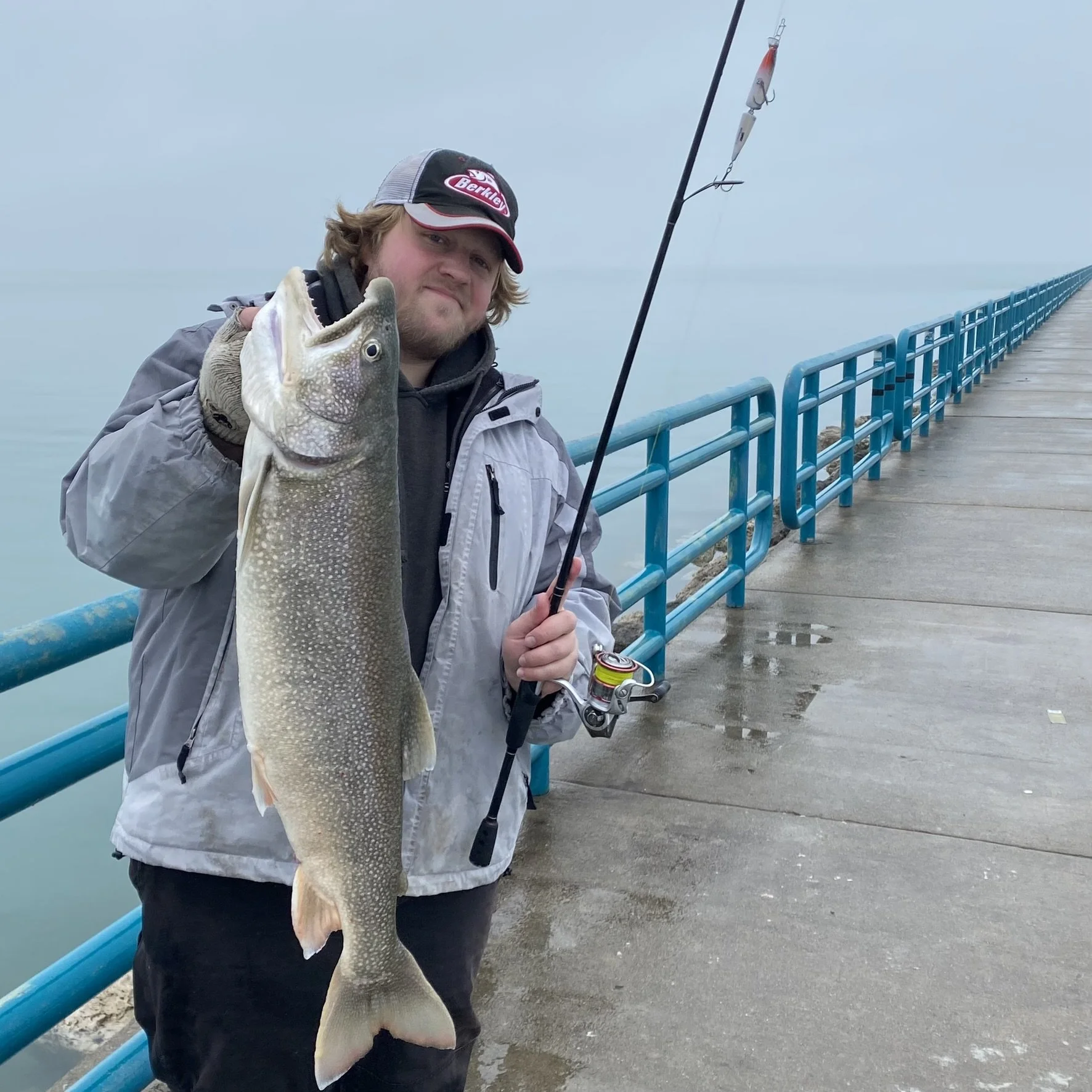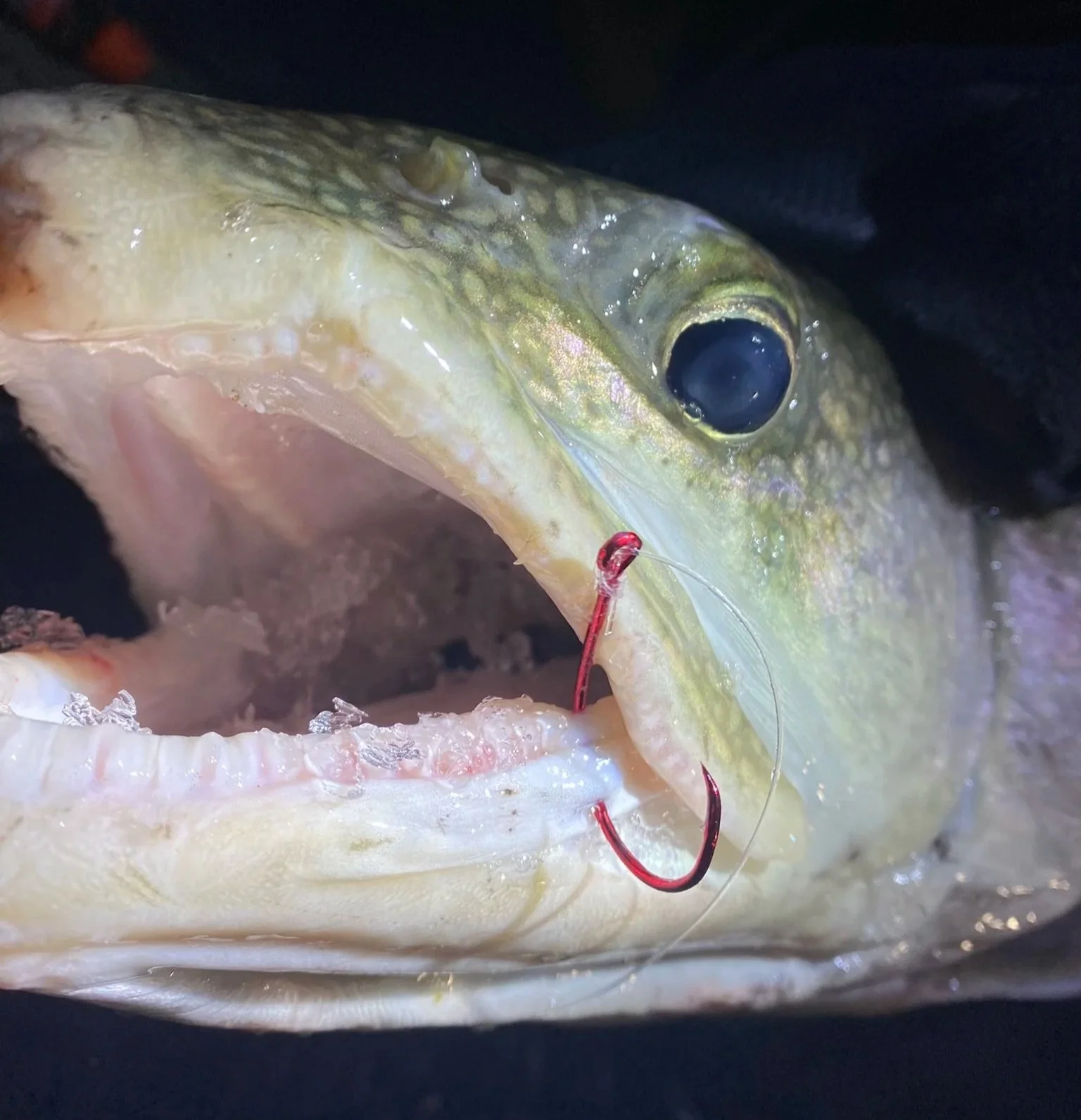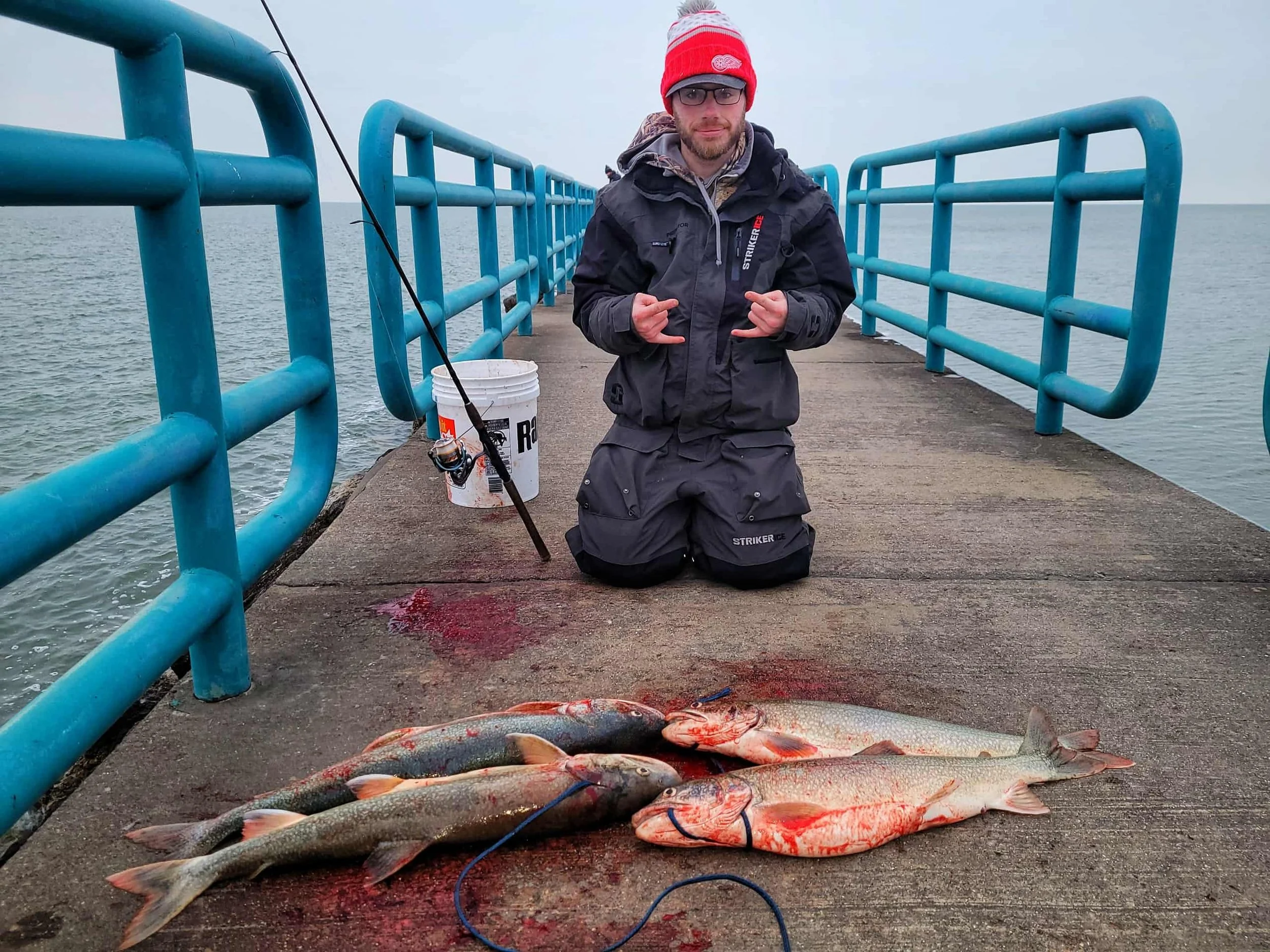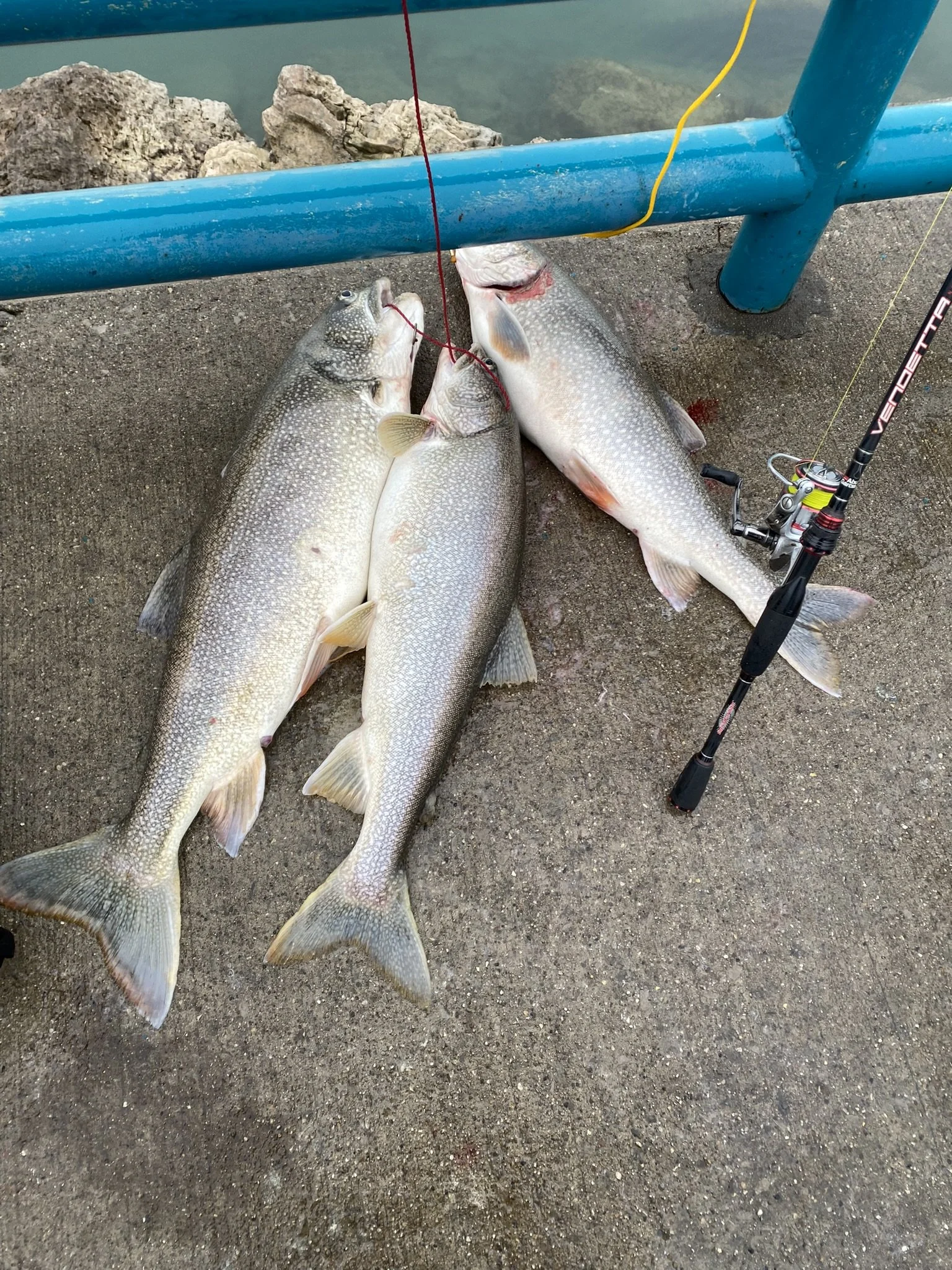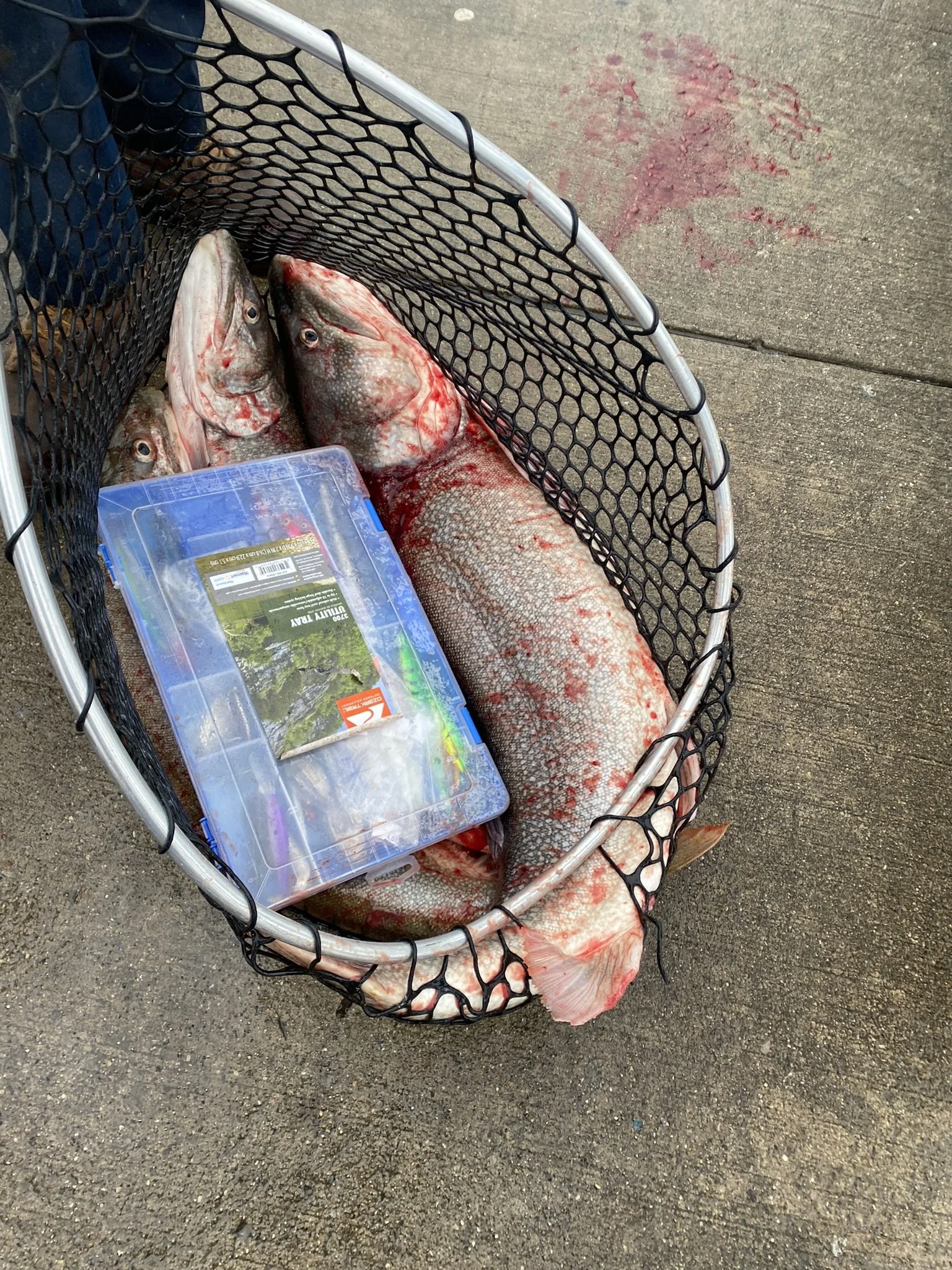Pier Pressure: Lake Trout Patterns and Cold Season Tactics from Shore
Lake trout have been underappreciated for too long. This is something I have heard many times growing up in the Great Lakes. Forget the nay-sayers, but lake trout are badass. What other opportunities are there to aggressively powerfish in the winter time for a fish that crushes a bait like a ton of bricks? When the weather begins to transition from autumn into winter, there is a cold water carnival and party at the pier to enjoy.
A memory to last a lifetime: with hard work and dedication, Andrew Woodman caught his personal best lake trout on a lipless crankbait, retrieving it slow and steady.
During this time of the year, the water is cooling down and lake trout make their way from the depths to more shallow areas to spawn, often within striking distance from shore. Piers and harbors around the Great Lakes light up with fishing activity and potential to land a personal best. This is a unique opportunity for those who may prefer casting over ice fishing during the cold months, or for those who prefer angling over hunting.
When lake trout spawn, they do not “get in, get out”. Annually, they will do their part in the reproductive cycle and linger around, sometimes few of them staying shallow through until springtime. Lake trout will begin to show up when the water temperature gets around and below 45 degrees. In the Saginaw Bay region, this is often in the middle of November. When they begin to pour in, their activity levels will generally start high and slowly decrease through the spawn and into the winter.
How do we target these fish most effectively? The answer is not what it may seem to be. Sure, most of the anglers on the piers are casting and power fishing different baits, but the general consensus for lake trout potential was (wrongfully) the mantra of “stop by real quick to check and see if they’re ‘in’ or eating.” Lake trout are just like any other fish or organism- they are not always actively feeding.
Fish activity can be categorized into three potential patterns. Think of it like a traffic light. green= positive, yellow= neutral, and red= negative. This is important to consider in your tools and style. Knowing how they are will shape your approach and mindset.
Positive-Feeding
When they are active and feeding aggressively
When lake trout are positive, they are feeding aggressively. These are the days where you see them following your bait to where you can see them, people are catching them with ease, and the boardwalk looks like someone walked down leaving a steady stream of red paint. Lake trout will almost boop their noses into the rocks as you pull your bait out of the water. It even seems like sometimes they get so close you can poke them with your rod. Truth be told, lake trout love feeding like this when the weather conditions seem bleak. To be honest, lake trout love to bite when the weather is shitty. If it is stormy (but safe), windy, overcast, crappy weather, dress and plan accordingly. Some locations will set up better when the wind is blowing from different directions. When casting, and searching for active fish, you want the water to be clear with a twinge of stain to it.
If you do not already use it, the Windy App, is an awesome resource to help you plan ahead for what days you might be able to fish or avoid. From reviews and personal experience, the app is accurate to give you an idea if it is even worth going out.
To effectively match the profile of bait around the Great Lakes, the lures specifics are generally about 2.5” to 4”, and 1/2 to 3/4 oz. in weight. While lake trout are not super picky on color, tried and true options are those that are metallic/reflective, or white/natural tones to mimic shad and smelt.
(Above) Sibling rivalry: Jeff Palmatier shows off a marvelous lake trout under blizzard conditions while his brother, Zach, looks onward with support. Both will testify that tipping a spoon with a soft bait turns lookers into biters.
The most common baits you will find being thrown at the piers during this time are spoons (Little Cleo, Daredevle by Eppinger, Moonshine, K.O. Wobbler, Etc.) and in-line spinners (Mepps, Arctic Spinners, Blue Fox Vibrax Series, etc.). These are great options for casting far and being able to being fished variably, but having options up your sleeve will make you a more successful angler. You might have common body baits, Minnow or shad profiles, already in your tackle box. The Husky Jerk, and Shad Rap series, by Rapala are great choices to keep in rotation. The Berkley Flicker series, Minnow and Shad, are respected for their abilities at swimming deeper when casting and producing fish.
Lipless crankbaits, squarebills, and swimbaits, are all phenomenal choices to employ. The tight vibration and action of a lipless crank mimics flashy, erratic motions of a baitfish. These can be burned under the surface, yo-yo’ed, or hopped slowly along the bottom.
Above: The Booyah One Knocker is a favorite to many for their reputation to trigger a thunderous gulp!
If you are looking for something flashy with a hard, aggressive, nose-diving action, a lipless crank that is thin in design, like the Rapala Rippin Rap or Berkley Jack, get the job done. Lipless cranks that offer more ‘hang time’ are more wide and bold in their build. When paused on the retrieve, they fall more slowly and do not have such a harsh dive downward. The Strike King Red Eye Shad, Booyah One Knocker, Berkley War Pig, and Rapala Rattlin Rap, all have reputations at coaxing fish into biting. The flash and noise from the bait can be noticed from afar and lake trout can come in swinging to swipe.
A Squarebill crankbait is another great option for a bold, erratic, wide tail-swingin action, and its efficiency around cover. If making contact with rock, a squarebill does a great job bouncing off and not getting hung up- often triggering lake trout on the pause. A benefit to these cranks are the larger hook sizes that they are often fitted with, helping secure the fish to a successful landing. Rattling and silent options are available depending on conditions and the taste of the day. These baits are “dummy-proof” and can be retrieved in any manner. Some great Squarebill cranks to check out if you do not have any are the Rapala BX Brat Series, the Berkley Squarebull, the Strike King KVD 1.5, and the Booyah XCS.


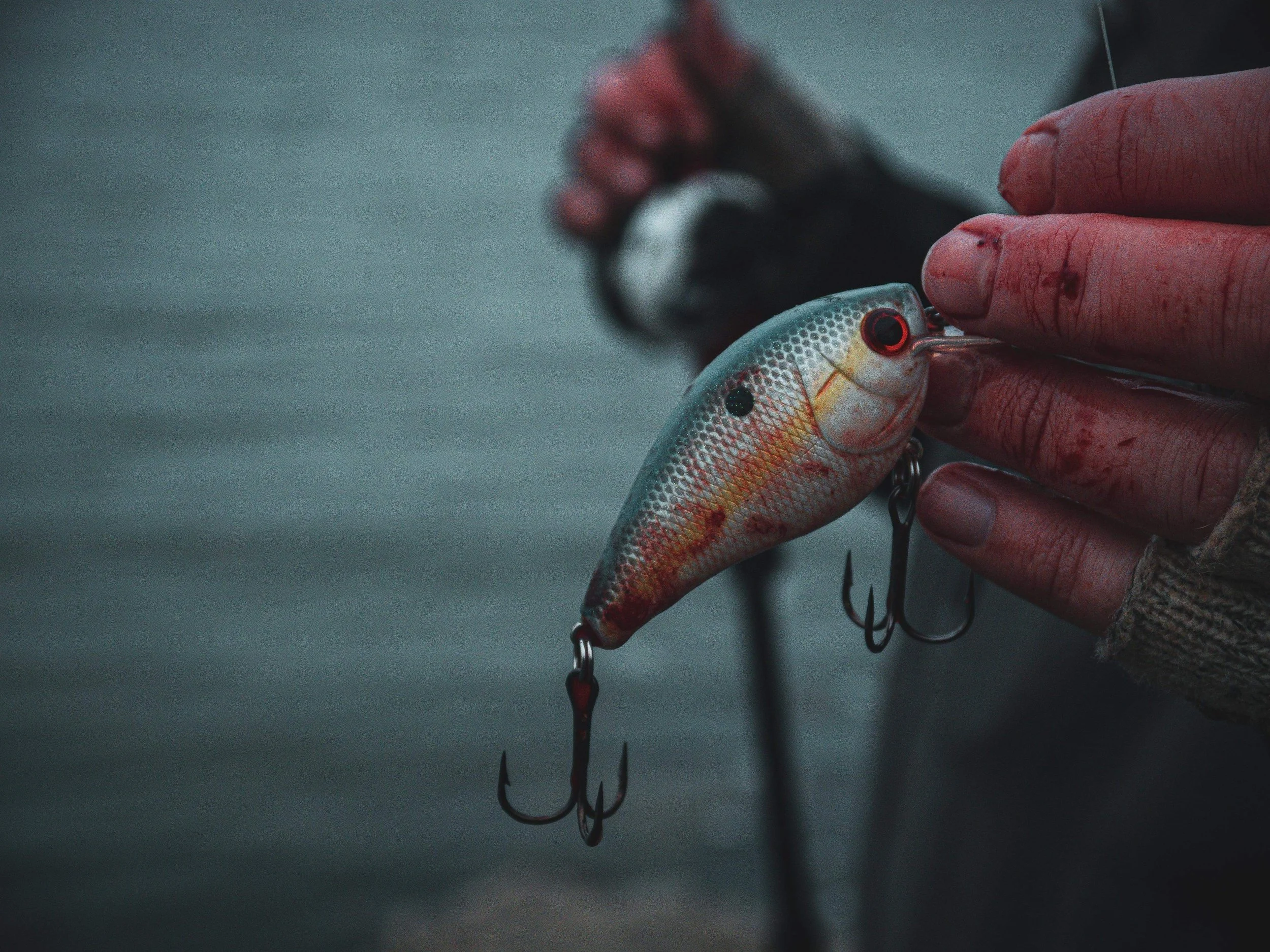

When fishing these baits under these conditions, do not be afraid for your retrieve speed to be faster than you may expect. These fish are so amped up, you can really harp on it to trigger a colossal strike. Keep in practice and mind to change up your retrieve every couple of casts to see how they want it.
Don’t forget baits and supplies!
For those venturing up the thumb coast along M-25, stop by and check out Chuckies Bait & Tackle for your needs. He does a great job at stocking bait, tackle, snacks, along with sharing advice, and giving an honest report.
1951 E. Center Rd, Essexville, MI, 48732.
989-493-0302.
Mon-Thurs. 6am-6pm, Fri- Sun. 5am-6pm.
Lake trout bring together an awesome community of anglers. (Below, Left-right) 1. Katie Malone shows off a great catch that fell victim to her lucky spoon! (Don’t worry, we wont share the specifics ;D) 2. Mike Malone, a true fish-head, shares that he enjoys using swimbaits for their variability in how he can use them. 3.) Mike Sills has a passion for the outdoors, hunting or fishing! He has a great Facebook page over at The Michigan Outdoorsman that everybody from the Great Lakes should like and be a part of. 4.) The author, Dominic Turcott, showing off a dandy caught on a Rapala BX Swimmer, fished slowly on a day where bites had to be worked for.
Neutral-feeding
Not every mission to the pier is going to be a lights-out bonanza. SO what does an anglers approach look like if there are fish around but they may be skittish or hesitantly picky? This is when your casts and approach may be more methodical, focusing on fishing more slow, realistic presentations to coax a lake trout into biting. When fish are present but not feeding hard, they may be holding near structure and not roaming aimlessly. Boulders, contour changes, bottom characteristics, or any other significant differences, must be kept in consideration. When you get to the fishing spot, if the water is clear or if the sun is high during a mid-day slump under fair conditions, this is what you may have to do to be successful. When the fish are there, but the conditions are not ideal for them to be super active.
You better believe it-
tubes work great for lake trout!
Tubes are a wonderful choice when fishing slow. You may even have these in your tackle box, especially if you are a bass angler. Tubes have a lot of variability in profile, as they imitate a goby or other baitfish hopping along the bottom. Lake trout do not exclusively feed up, they are keen on getting whatever they can get in their mouth, especially if they have to pick it up off of the bottom (Remember this for later).
Paddle tail swimbaits or grubs on a jighead have been proven to seal the deal when things are tricky. When lake trout are being picky, remember to keep it subtle, slow, and sometimes smaller. A common paddle tail, the Strike King Rage Swimmer, come in affordable muti-packs and can be found with ease. For a pre-rigged option with quality hooks, the Storm Wildeye Shad or 360 GT Series are great choices, too.
A subtle hard bait, like the Rapala BX Swimmer, is a great option that does not give off too much action while still seducing a fish into biting. These baits weigh 3/4 oz, and sink slowly. Upon retrieval, they swim in a gliding motion and can be paused.
A lot of bait options that work when fish are aggressive also can get the job done under these conditions by adjusting technique. Body baits, like those mentioned above, can be reeled in slowly with brief pauses. Lipless crankbaits can be worked along the bottom with little twitches of the rod trip to create a ‘hopping’ action, as if a wounded bait is escaping into a place of safety.
Blade baits are a good option that similar to lipless cranks, only difference being the body design. A blade bait is essentially a thin piece of metal with a majority of the mass being towards the nose. With this build, they sink fast and create a tight vibration that can be fished as slow or as fast as desired. These work well vertically for hopping along the bottom, which makes them very user-friendly when fishing several feet above the water on a pier or walkway. The Berkley Thinfisher, Captain Jay’s Blade Bait, or the Reef Runner Cicada, have reputations for being fish-catchers.
If there is a single piece of something different than the consistency of a dredged-out channel, focus on it. Whether it is a shelf where it is flat and not as deep, a hump, a gravel bar, where the channel peters off, etc.,
Great Lakes anglers who target walleye or bass learn that lake trout behave in a very similar manner, and that a lot of the baits and presentations crossover.
Negative:
When they are laying low and lazy.
What does it mean when the bite pattern seems to be negative? Laziness. Plain and simple, when lake trout are being lazy, they are not going out of their way to snap something moving fast. They do not feel like exerting too much energy. This can be noticed when conditions of the water are muddy, the sun may have been high, barometric pressure has been high, and fishing pressure has them weary. Another crossover tactic for lake trout may surprise you, but catfish tactics used when bottom fishing can be overlooked. Too often we forget that all fish can eat bait off the bottom if it comes down to it, and lake trout are no different. With intuition to target burbot during this time of year, anglers have been successful with deploying cutbait hooked on a circle hook, rigged on a strong rod with a bite detector. This is a go-to method for anglers at night when fish are scurrying the bottom in search of something to eat. In the colder months, a lot of bait will begin to die off, leaving all sorts of game fish to patrol and scavenge for easy pickins.




For this “sit and wait” approach, your gear or rigs do not matter as much. As long as your gear is strong and you have bells or bite alarms, you should be good to go. Standard carolina or “slip sinker” rigs work very well, as can regular perch rigs. Important advice to be shared is to make sure the hook itself is big enough, but not overwhelming. Depending on the size of the cutbait, 1/0 to 3/0 work very well at connecting and holding on.
Lake Trout Lovin
〰️
Lake Trout Lovin 〰️
Bait choice can be a critical component as well. Like casting, it is good to have options. While baitshop minnows do work, shad, sucker, and smelt, work the best. These options carry more scent and appeal, which is important in these places where there can be an abundance of baitfish.
Bottom fishing using traditional catfish tactics are a trick to have up the sleeve when the fishing is tough and conditions are challenging. If you are strong-willed enough to stick it out, you may be the king of the pier and be “that guy” who did not go home empty handed.
Lake trout can be found in the cooler months of autumn into winter, close to shore around the Great Lakes. There is a good chance that an opportunity to hook into a fish to remember, whether it be a lake trout or other coldwater species, is within driving distance for a day trip. With that being said, some areas and locations are better than others.
Consult the Michigan DNR fish stocking database to find locations near you where lake trout have been stocked over recent years. Ports with river systems directly connecting to a Great Lake are generally better than those that do not.
Some of the hallmark spots across the state include Grand Haven, Holland, and Manistee on Lake Michigan; while Oscoda and Caseville are often the hottest spots on Lake Huron. For those in the Upper peninsula, Marquette, Copper Harbor, and Manistique, are a few choices to explore with big potential. Truth be told, it would not be too much of a surprise to come across a lake trout at any port along the Great Lakes shoreline.
REGULATION NOTICE:
Ports of Grand Haven, Muskegon and Whitehall/Montague under single-pointed hook regulations Nov. 1–30. This means only single shank hooks, no lures or jigs of any kind. These measures from the DNR are in place to protect the whitefish as they spawn. If targeting lake trout, your best bet would be to use live bait during this time. Please consult the DNR bulletin here for further details.
For those up for a cold season challenge, dress accordingly and get in on the action! Bring your long-handled net, a stringer, a cooler for your catch, and your equipment of choice. Best of luck out there and always practice safety first.
“Throughout some years where we do not get much of an opportunity to ice fish the Great Lakes, casting for lakers in the winter is one of my favorite outdoor activities!”
- Chris Blackmer
A special word of appreciation is shared with all who have been a part of this article by sharing their thoughts and photos. Andrew Woodman, Joe VanOoteghem., Chris Blackmer, Mike & Katie Malone, Mike Sills, Michael Lipinski, Brenden Redmond, McGuire Tedford, Zane Shannon, Adam & Travis Main, and Jeff Palmatier- THANK YOU for the help and the memories we share. All content has been used with expressed permission or under free/fair use.
-Dom, Foresight Fishing Media





